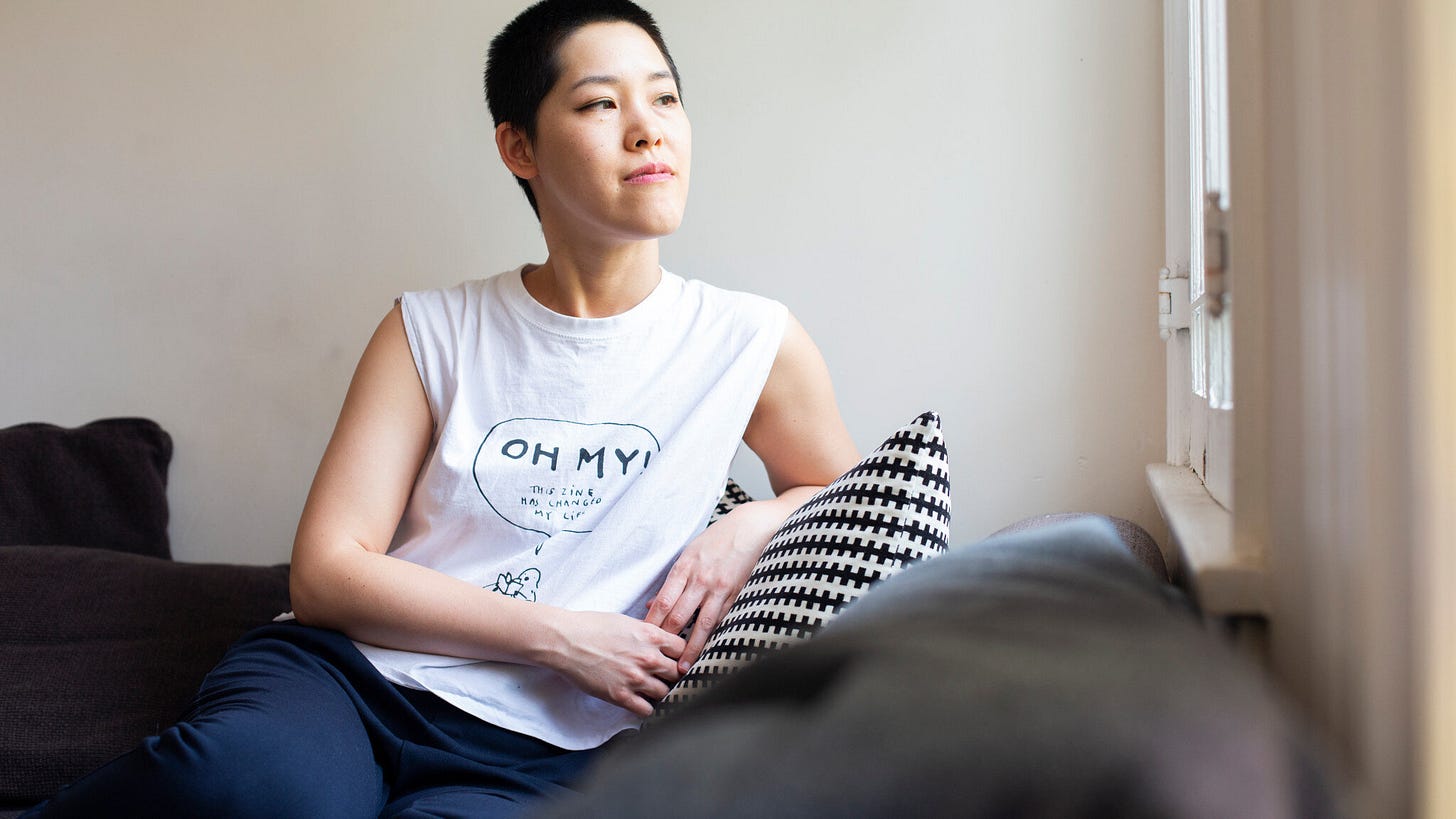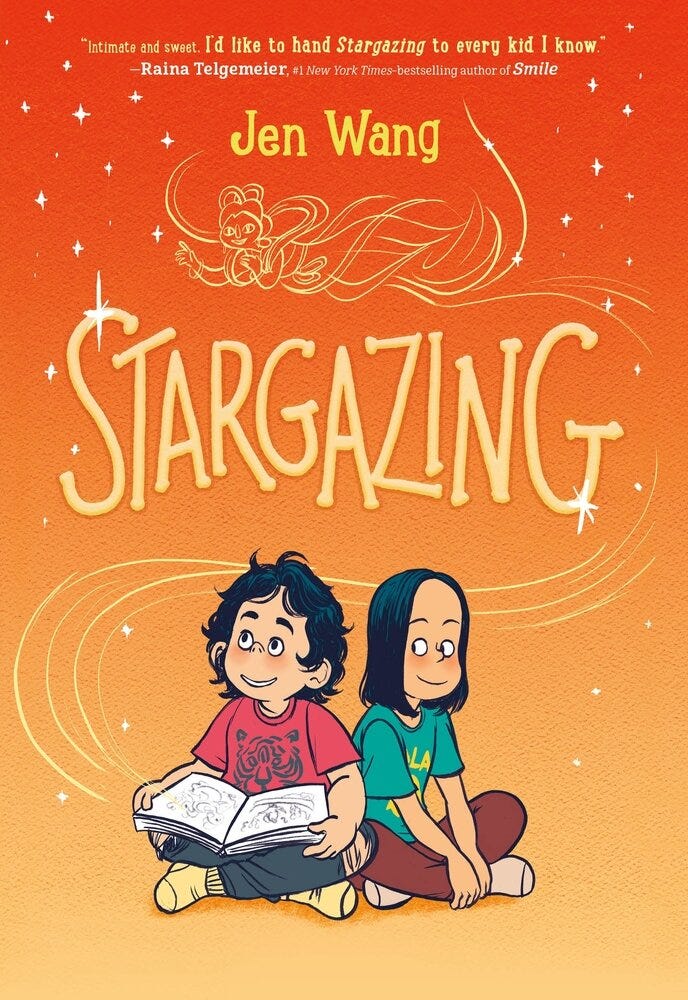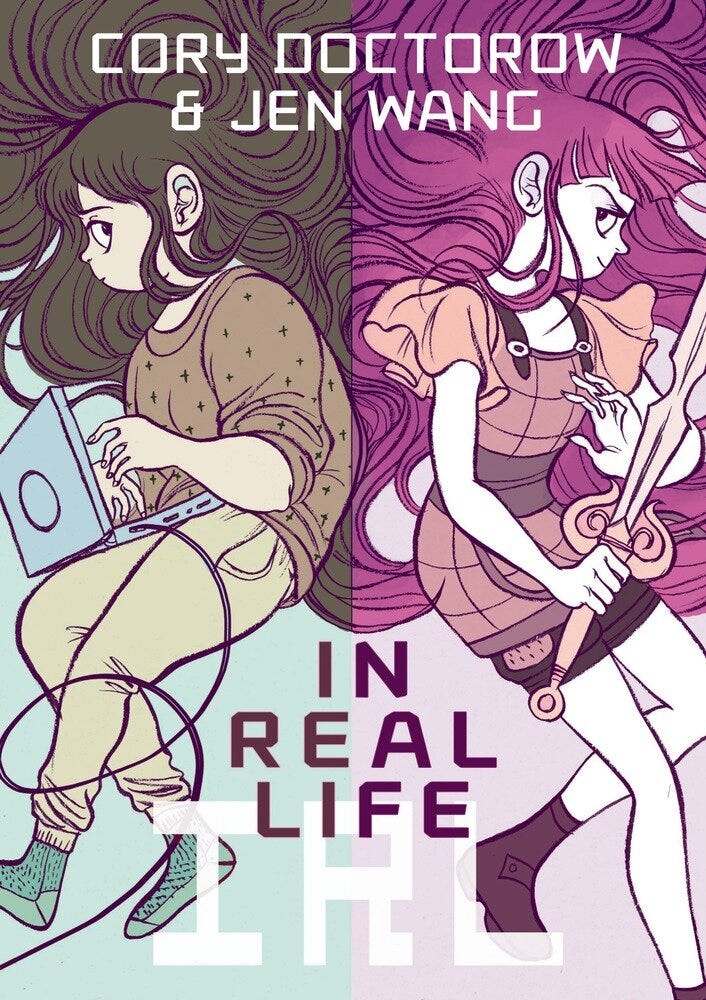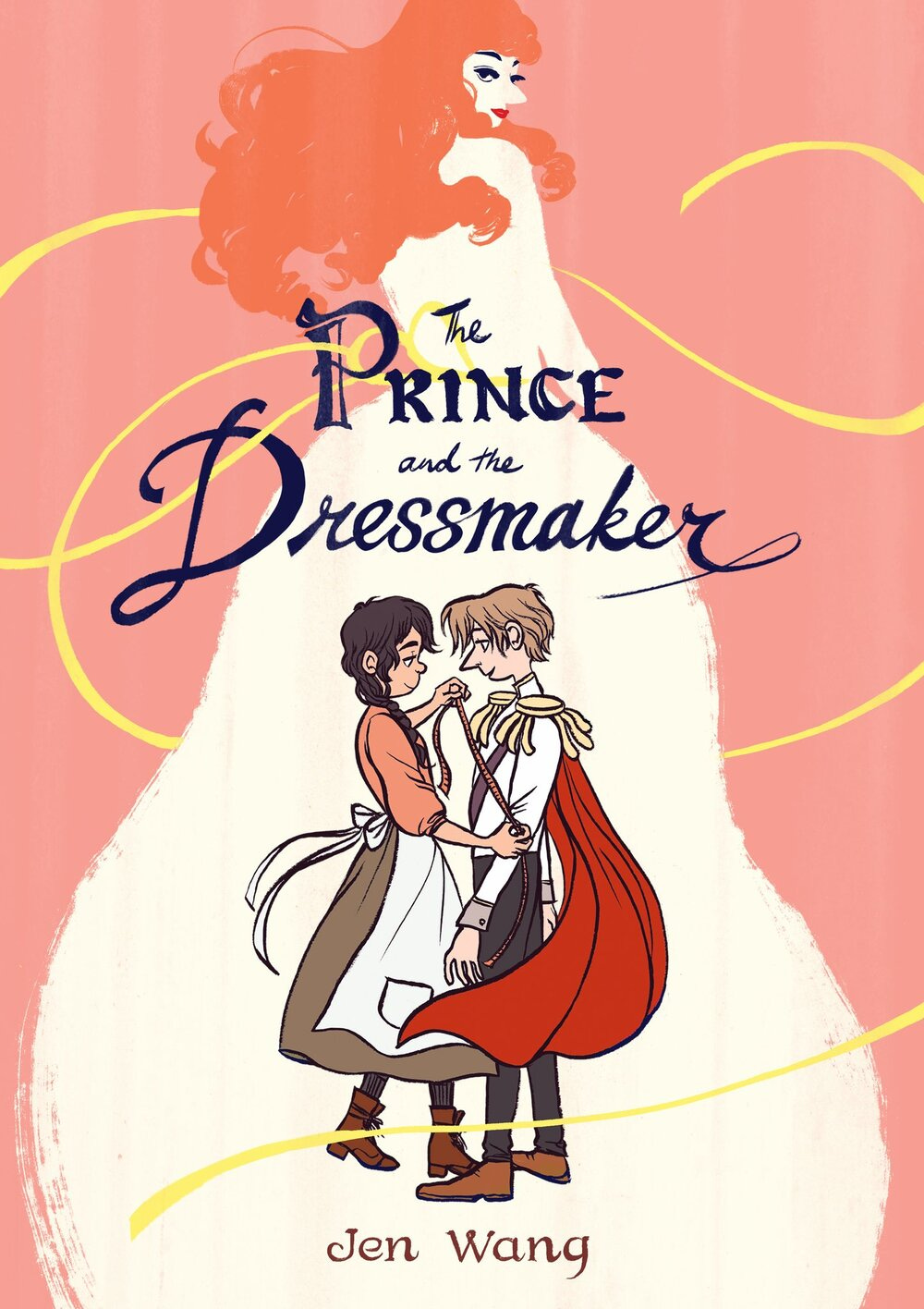Getting Diversity Right
Graphic novelist Jen Wang meets hot issues of our time with love
Hello, friends. It’s wildfire season in the American West, and smoke creeps into our valley every time the air falls still. Even so, we’re in preparation mode for the new school term starting next week. By coincidence, the latest graphic novel by author-illustrator Jen Wang also ships next week, and I can’t wait to read it.
Graphic novel? you ask, one hand on the scroll-away button. Has all that smoke suffocated the synapses of the once-astute professor?
Hold on there. This isn’t just any graphic novelist.
Jen Wang is the solo author or co-author of four books and co-founder of the Comic Arts LA festival.1 Although her books speak directly to teens and tweens, adults can appreciate how each of them answers fears of our time with love. In fact, for parents anxious about predatory technologies and rapidly changing social norms, Wang’s books provide soothing guidance for us oldsters, as much as they do for our young.
Most valuable, perhaps, Jen Wang is not afraid to introduce divisive political issues into her books and open up a pathway to a possible consensus. Wang shows what the modern buzzwords “diversity” and “inclusion” mean when the words draw their meaning from a loving community, not from corporate training manuals or political podiums.
Until Ash’s Cabin comes out, here are the three most essential books of JenWorld, with brief notes on why readers burdened by divisiveness in our time will want to know about them. I recommend the first and third on the list to everyone:
Stargazing (2019)
In Real Life (2014)
The Prince & the Dressmaker (2018)

I. Stargazing (2019)
Based in part on the author’s childhood recovery from a brain tumor, this is the story about a middle-class Asian-American family providing a temporary home for a widow and her daughter. The middle-class daughter and the guest lodger develop a friendship despite gossip, differences of taste and class, and temperaments. Of course, the friendship is tested, and one character is found to have a brain tumor. The story ends with a powerful affirmation of friendship, forgiveness, and community care.
Like all of Wang’s books, the characters represent the diversity of bodies that one meets in life. Some are pudgy, some thin. Some have short hair, some long.
In early chapters, we admire characters who keep an open mind about other families’ foods. The main character, Christine, eats a vegetarian noodle dish made by the new lodger, Mrs. Lin, and discovers that she can eat mushrooms. At school, two Asian-looking boys (one eating a sandwich) speak ill of Asian food on the school menu. A blonde girl breezes in and expresses her love of Chinese dumplings, her “fave.” In the minutiae of everyday life, there are opportunities for all characters to reveal their closed or open mind, and we see characters gravitating toward others’ openness. It’s pleasant to be around.
While undermining stereotypes and humanizing characters throughout, Stargazing showcases the thousand tiny ways that individuals open themselves to the difference of others in order to make friends. The book also tests the limits of such openness, ultimately demonstrating that a strong community is woven from all those countless tiny softenings.2
Raina Telgemeier, author of the bestseller Smile, called the book “Intimate and sweet … I’d like to hand Stargazing to every kid I know.”
I’d like to hand it to every adult.
II. In Real Life (2014)
Wang’s second book was an adaptation of a story by Canadian-British sci-fi author Cory Doctorow. I would not call this one essential reading for every adult, but it’s a hidden gem for parents (or other grown folk) who are stressed about their teens’ time on digital devices.
In an early scene, a mother helps her daughter Anda set boundaries on her activity in a popular online multiplayer game — modeling for all of us how this might be done effectively. As in all of Wang’s books, this contemporary family challenge is handled with simplicity and love.
But the daughter discovers that the characters she has been killing in the game may be played by real people, not bots. Her curiosity about one of the players leads her to go behind her parents’ back, using an internet cafe to chat with a stranger in China. These chats are transgressive within the game as they are in real life. But because of them, Anda learns about child labor in China, and she intervenes to try to improve living conditions for her distant friend.
The book raises many issues that parents and teens can discuss together. Even though friendship prevails within the narrative, there are many points when the story could go another way. What’s helpful for an adult is the reminder that young people can make moral choices, though it’s clear that Anda’s involved parents are also essential to the safety of someone who intends to play online only with classmates and girls, but easily gets drawn into breaking rules.
This is an excellent, contemporary book for teens and parents.
III. The Prince & the Dressmaker (2018)
Wang’s boldest book to date is a fairy tale about a dressmaker who meets a prince — because he wants someone to make dresses for him in secret.
With this scenario, Wang sails directly into one of the most challenging issues facing teens and families in our time: the issue of adolescent gender identity in a culture that is sometimes permissive and sometimes restrictive about what that identity might be.
As with all her books, Wang successfully avoids the conventional ruts of argument where people get stuck in differences about what they believe is right or just. Instead, she tells a beautiful story with characters of the purest motives and highest decency.
Prince Sebastian wants to please his parents and wants to live up to the legacy of his burly, sport-loving father. He also loves beautiful dresses. He loves how it feels to wear them.
Sebastian’s parents are decent and caring, too. For his sixteenth birthday, they host a ball and invite eligible princesses to meet him. They allow him opportunity to get to know his guests. They trust him to talk with the princesses alone.
Conflict escalates with this pressure on Sebastian to choose a wife, and with the dressmaker Frances’s desire to make a name for herself.
The Prince & the Dressmaker asks how far friends must go to protect each other’s secrets. Even more important, it asks how parents and families can respond when they discover that a child is growing up to be someone the parents did not expect. The reader who can remain indifferent to the triumphant affirmation of family at the end of this book is a hard nut to crack indeed. Everyone deserves to experience this gorgeous book.
In the phrase of the talented Substack writer
, Prince Sebastian is That Trans Friend You Didn't Know You Needed, and his father is the parent of a boy wearing dresses that you didn’t know you needed either.This book appears on banned and challenged lists. It will be there because people haven’t read it. If you see it challenged in your local library, I hope you will get a copy and decide for yourself whether to stand up for one of the most beautiful, uplifting family books of this decade.
Great art and great books require two things of their creators:
Keen insight into some aspect of human nature, and
Ability to express that insight in a material form such as language, fabric, or clay.
Jen Wang has the goods. If your local library does not have her books on the shelf, won’t you see what you can do to fix that?
Until next time —
Tara
This Jen Wang is not to be confused with another author
, who has also written a YA novel and has a wonderfully named Substack, Jen’s Midlife Chrysalis.Comic artist
tells a story with a theme not too far from this on Substack. His character travels solo to “be a little uncomfortable on purpose.” “You cling to every little human connection that much more” (“Solo Trip”).





Wow, very cool substack and thanks for taking the time to distinguish me!
Interesting post -- possibly good fits for my eldest. Thank you!